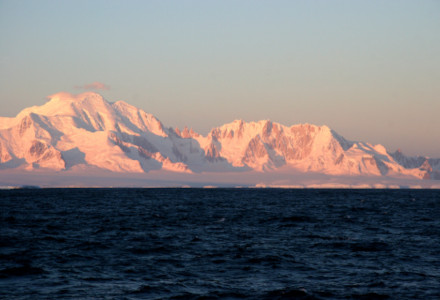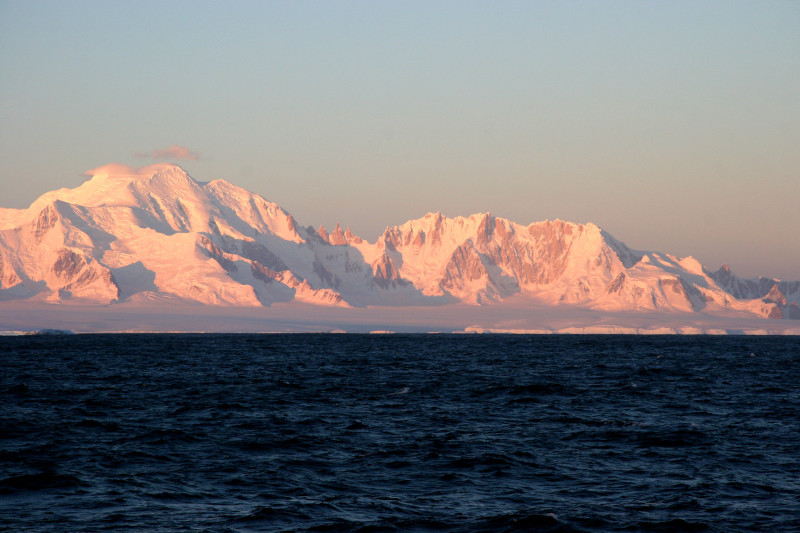Alexander Island Facts
- The title of Alexander Island serves as the most frequently employed name for this extremely isolated and remote geological formation. It does have several other general titles, though. These other terms include the very similar Alexander I Land and Alexander I Island.
- This stunning creation of natural processes stands out in the annals of science for several remarkable reasons. It ranks as the largest island in its entire region of the globe, for one. The natural wonder’s also the second-largest uninhabited island in the world, as well.
- No archaeological evidence exists to indicate that any ancient humans ever knew of the existence of this site. The first known sighting of it only occurred on January 28, 1821. A Russian expedition, led by Fabian Gottlieb von Bellingshausen, accomplished the discovery.
- At the time, however, the group mistakenly believed it to be part of the mainland, due to its great size and extensive ice cover. This misidentification persisted until further exploration revealed its actual nature. A true identification only occurred in the 20th century.
- Several countries subsequently attempted to claim the amazing site following its discovery. The United Kingdom did so, in 1908. Chile later made the same attempt in 1940, followed by Argentina in 1942. The international Antarctic Treaty, however, recognizes no claim.
- Currently, the intriguing Alexander island enjoys a relatively high degree of protection from the many depredations of man. That’s because it’s covered under that same international treaty designed to monitor and preserve such amazing locations for the benefit of all mankind.
Related Articles
Alexander Island Physical Description
Though rarely seen due to its extremely remote location, the incredible Alexander Island never fails to capture to the attention of those few who do venture to its region. It does so for a wide variety of reasons, of course, but its sheer size alone understandably stands high among those factors.
Though highly irregular in outline, the magnificent geological structure possesses a generally rectangular overall shape. The island also measures about 240 mi (390 km) in length and 50 (80 km) in average width. The island’s total area further equals approximately 18,946 sq mi (49,070).
Along its exterior boundaries, the remarkable island additionally displays a very rugged and indented coastline with numerous inlets and fjords. Moving further inland, however, even more wonders await the visitor. Their variety increases to a very surprising degree, as well.
The site also formed as impressively mountainous in nature. Numerous peaks dot its landscape. The highest of these, though, bears the name Mount Stephenson. It reaches an altitude of about 9,800 ft (2,987 m). The central part of the island remains dominated by the Douglas Range.
The breathtaking distinctiveness of Alexander Island doesn’t simply end there, however. Most of the large island’s also permanently covered by ice. Individually impressive structures, called ice shelves, given their specific nature, such as the George VI Ice Shelf, also border the mesmerizing island.
Further augmenting the otherwordly beauty and uniqueness of this location comes yet another fabulous wonder of Nature. Numerous glaciers also descend from the many inland mountains, flowing to the coastline, with some even later forming floating ice tongues out in the sea.
But not all of the features of this marvel of natural geological forces owe their visual appeal and scientific interest to purely cold-related factors. That’s because some smaller parts of the intriguing island also show tantalizing evidence of past volcanic activity that helped to shape the site.
Alexander Island Location, Formation, and Ecology
Nature created the truly mind-boggling Alexander Island in a highly remote region of the world already famous for its abundance of marvels. Given its ice-covered nature, though, that location probably won’t surprise many of you. Its situated within the boundaries of Antarctica.
There, its formation placed the marvel of Nature in what now bears the title of the Bellingshausen Sea. This formation itself lies roughly west of Palmer Land, which forms part of the Antarctic Peninsula. From that, though, it’s separated by both the Marguerite Bay and George VI Sound.
This incredible isle formed through a series geological and tectonic processes. Tectonic activity ranks high among these. Evidence additionally indicates that the site itself formed due to the subduction of oceanic crust beneath the continental crust of the Antarctic Peninsula.
Yet, the mysterious island also apparently had early volcanic origins, too. Significant evidence of volcanic rocks, such as andesite and basalt, exists in numerous scattered locations. Powerful volcanic eruptions apparently contributed to the formation of the island’s initial landmass.
Over countless millions of years, sedimentation also played a very significant role. Marine sediments accumulated on top of the volcanic base, further adding to the island’s geological structure. It was originally connected to the mainland, but later separated when a channel formed.
The harsh Antarctic climate, with its extensive glaciation, further significantly shaped this truly stunning product of geological forces. Large glaciers steadily eroded the landscape and deposited moraine and other glacial debris, strongly contributing to the island’s current topography.
Given the harshness of its environment, life understandably remains relatively scarce on Alexander Island, except within the surrounding waters. Scarce, however, does not mean absent. A limited number of species of flora and fauna do manage to survive here, creating a unique ecology.
Mosses and lichens comprise the primary forms of flora, typically situated in ice-free coastal areas and rocky outcrops. There, they tolerate the freezing temperatures and limited nutrient availability. Microalgae also live inside of meltwater pools and even on the surface of snow and ice.
Numerous seabirds such as skuas, petrels, and various species of penguins also frequent the island. These species obviously rely on the surrounding sea for food, and mainly use the site for breeding purposes. The terrestrial invertebrate fauna’s limited, but includes mites and springtails.
Features Sharing Its Region
Check out our other articles on 5 Fabulous Fauna of Central America, Striped Dolphin, Komodo Island, Common Water Hyacinth, Achemon Sphinx Moth, Emperor Penguin, Rose’s Ghost Frog


